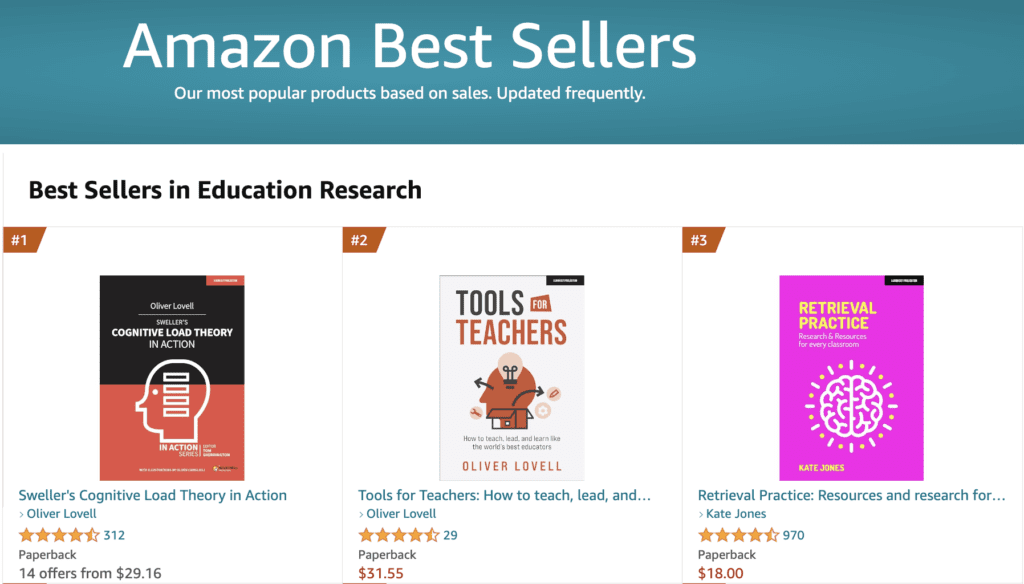How ideas are objects and what this means for how we communicate

Some time ago I was lucky enough to interview the hugely thoughtful, intelligent, and influential Oliver Caviglioli (listen here).
It was a really impactful conversation for me and really shifted how I think about ideas an organising them. In fact, it completely changed how I was approaching writing Cognitive Load Theory in Action at the time, and helped me to write a much clearer book as a result!*
The big idea within this podcast, and the big idea that I want to share with you today, is that ideas are objects. Oliver drew on the ideas within Barbara Tversky’s book, Mind in Motion: How Action Shapes Thought, to share this profound idea. Oliver described how, by coming to understand this idea-object connection more deeply, we are empowered to work more clearly, efficiently, and impactfully.
Finding the objects within language
The idea at the heart of Oliver’s thesis is that language is shaped around ‘orientation spatialisation metaphors’. Let me try to explain this simply.
Knowledge is organised in our minds within ‘schemas’, collections of ideas and concepts grouped together and arranged based upon how likely they are to be used together. When we communicate, we are attempting to transplant a portion of this arrangement of ideas and concepts from within our own minds, into the minds of others. As we communicate arrangements of ideas, we simply must rely upon metaphors that deal with to space to do so.
By way of example, let’s look at the opening paragraph of this summary. Every single sentence within it contains a spatial metaphor.
- Sentence 1: The big idea within this podcast was that ideas are objects
- Sentence 2: Oliver drew on the ideas with Barbara Tversky’s book, Mind in Motion: How Action Shapes Thought, to share the ways in which ideas are objects.
- Sentence 3: He described how, by coming to understand this idea more deeply, we are empowered to work more clearly, efficiently, and impactfully.
Each of the bolded words above relates to space or the physical world in some way, and I probably missed some. Every relationship between ideas that we ever communicate relies upon spatial metaphors, and the majority of communication is just that – communicating relationships between ideas. Again, once we realise this, we can begin to use it to our advantage.
The two primary orientation spatialisation metaphors that Oliver came back to time and time again were the container and the path. We organise ideas in containers, and we map them out along paths.
Oliver suggests that if we want to think like him, all we need to do is listen out for the orientation spatialisation metaphors in language, and we’ll have x-ray vision into the structure of ideas that people are trying to convey!
In the week ahead, keep your eyes and ears peeled for spatial metaphors in language. Once you notice them, you can’t un-notice them!
In a future EdThread, I’ll explore how we can use this idea of containers and paths to organise our thinking and writing!
Announcements and Opportunities
Are you responsible for leading Instructional Coaching in your school or are you keen to take on this role soon?
Are you:
- Trying to make instructional coaching work (or work better) in your school or across multiple schools?
- Wondering what you can do to increase the impact of coaching in your context?
- Searching for guidance on how to overcome common challenges to coaching culture and implementation?
The Steplab Certificate in Coaching Leadership is here! We think it’s what you’re looking for.
The Certificate is a year-long course designed to support anyone leading coaching to build true coaching expertise and set up a thriving coaching program in their school, or across multiple schools. I’ll be designing running it alongside a star cast including Josh Goodrich and Harry Fletcher-Wood!
Our first Australian cohort launches in January 2024, and there are only 100 places available in cohort 1.
If you’re interested, find out more and apply here.
We also encourage you to watch the overview video here.
——–
*Which has been very popular ever since. I checked sales last week and was delighted to see the following!
